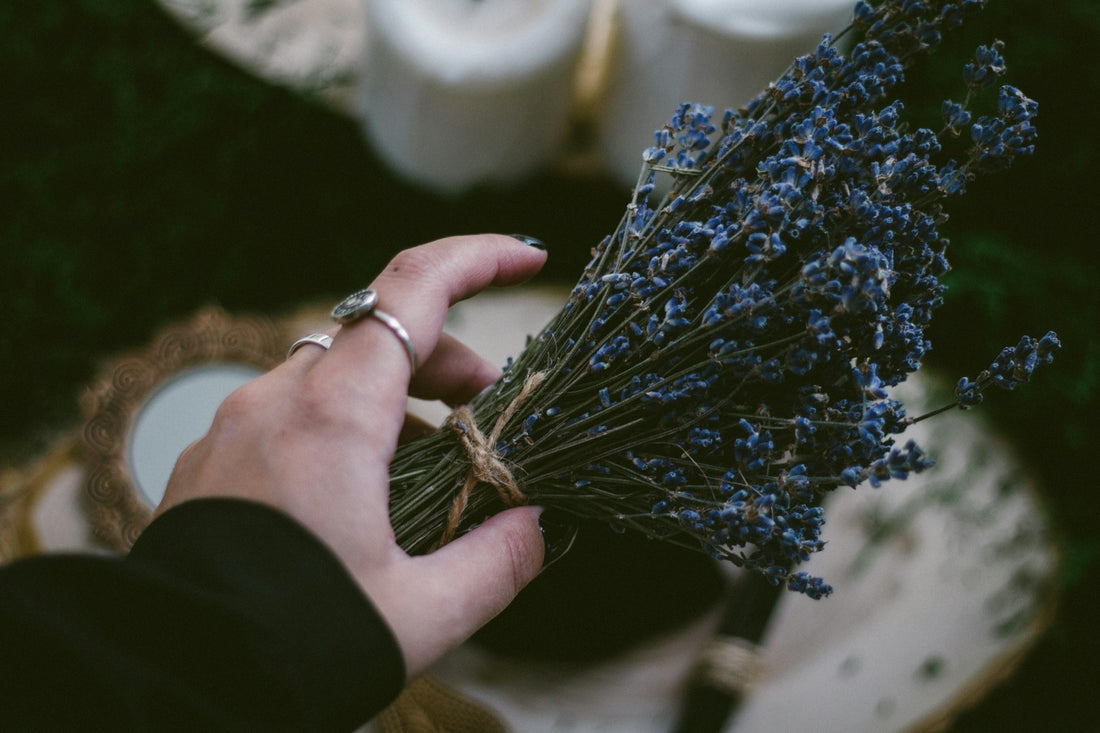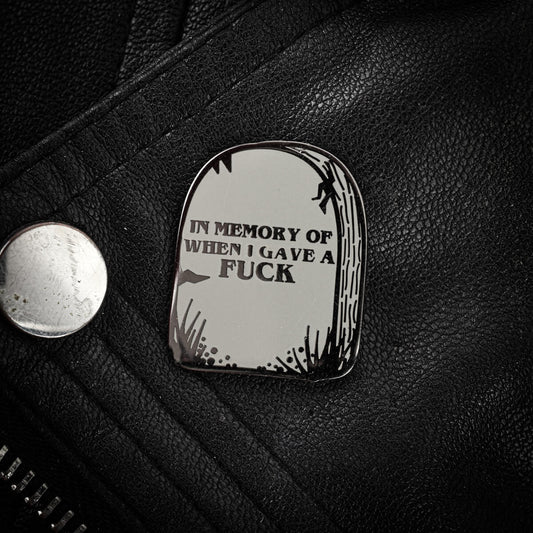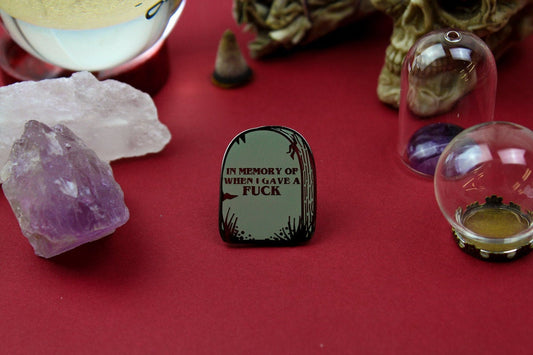
What is Wicca?
Share
Just like the Occult and Satanism, Wicca often gets misunderstood and surrounded by misconceptions. We'll look at Wicca as a lively religious movement, from its origins and rituals to its symbols and impact on popular culture.
We’ll cover Wicca's main beliefs, including its respect for nature, celebration of the divine, and use of magic and rituals. We'll talk about spellcasting, deity worship, and observing seasonal cycles and lunar phases. Additionally, we'll explain Wicca's view of divinity, looking at its various gods and goddesses.
We'll also break down the symbolism in Wiccan rituals, explaining the meanings of sacred objects and gestures. We'll trace the links between Wicca, witchcraft, and spirituality, from ancient practices to modern forms, showing how it has changed over time.
Wiccan festivals like Sabbats and Esbats mark seasonal changes and lunar phases. We'll explore their origins and meanings. Finally, we'll highlight Wicca's influence in popular culture, from movies and books to fashion and art.
We hope this will help people understand and appreciate this ancient yet evolving spiritual path, and hopefully dispel a few myths along the way!
Is Wicca a real religion?
Wicca is indeed recognised as a real religion and falls under modern Paganism. It is seen as a nature-based religion and is the largest and best-known branch of modern Paganism. There has been significant academic study on its practices and beliefs. Religious studies scholars also consider Wicca a mystery religion, noted for its secretive initiation rituals and practices.
While academics and practitioners agree on Wicca's status as a religion, followers have varied perceptions. Some call it a religion, while others see it as a spiritual path or way of life. In the UK, over 13,000 individuals identified as Wiccan in the 2022 national census, showing its growing presence in society.
Overall, despite some debate about its status as a religion, Wicca's importance as a spiritual practice and belief system is clear from its widespread following and academic interest. Whether viewed as a religion, spirituality, or way of life, Wicca is significant for its followers, fostering connections with nature, spirituality, and community.
What are the main practices in Wiccan faith?
Wicca involves a range of practices deeply connected to nature, spirituality, and rituals. Central to Wiccan belief are rituals, usually performed in private, to celebrate Sabbats, honour deities, and perform magic. These rituals align with the moon's phases, especially the full and new moons, and often use magical tools to focus intentions and connect with nature and Wiccan deities.
A key element of Wiccan practice is the Wheel of the Year, dividing the year into eight parts, each with its own festival. These festivals, called Sabbats, include Winter Solstice (Yule), Imbolc, Spring Equinox (Ostara), Beltane, Summer Solstice (Litha), Lughnasadh, Autumn Equinox (Mabon), and Samhain. Each Sabbat has its own meaning and is observed with rituals celebrating nature's cycles and the changing seasons.
Rites of passage are also important in Wicca. Initiation rituals mark significant milestones in a practitioner's spiritual path. Through initiation, individuals become Wiccans and enter the first degree of Wicca. In British Traditional Wicca, there are three degrees, each with its own rite of passage for advancement.
Symbolism is vital in Wiccan practices, with the pentacle being a well-known symbol. Wiccans see the pentacle's five points as representing the five elements—earth, air, fire, water, and spirit. It also symbolises the human form, with each point representing different parts of the body. The pentacle is a powerful emblem of Wiccan beliefs, spirituality, and connection to nature and the divine.
How does Wicca view the concept of divinity or the divine?
Central to Wicca is the idea of divinity, which differs from traditional monotheistic religions. Wicca often embraces a polytheistic or pantheistic view, recognising multiple deities or forms of the divine. This is often called duotheism, acknowledging both a God and a Goddess as key figures.
The God and Goddess represent complementary aspects of the divine, embodying masculine and feminine energies. They are linked to nature, fertility, and the cycles of life, death, and rebirth. Some Wiccans honour specific ancient gods and goddesses from various mythologies, while others see the God and Goddess as symbols of universal forces.
Wiccans connect with the divine through rituals, meditation, and communion with nature. Ceremonies are held to honour and invoke these deities, seeking their guidance, blessings, and help in magical practices. Many Wiccans also believe in spiritual beings such as faeries, nature spirits, and ancestors, showing them respect and reverence.
Wicca emphasises personal connection and empowerment, encouraging practitioners to form their own spiritual relationships and experiences with the divine. This approach allows for diverse interpretations and expressions of faith within the Wiccan community. Practitioners draw inspiration from various sources, including mythology, folklore, and personal intuition.
The concept of divinity in Wicca is complex and ever-changing. It reflects a respect for the natural world, a celebration of life's cycles, and a deep connection to the spiritual. While Wiccans may have different beliefs and practices, a shared respect for the divine and the interconnectedness of all existence are core principles that unite this tradition.
What are some common symbols in Wicca?
|
Wicca, like many spiritual traditions, is rich with symbolism that holds deep significance for its practitioners. Among the most common symbols in Wicca is the pentacle, a five-pointed star enclosed within a circle. This symbol is often used in rituals and magical workings to represent the elements of earth, air, fire, water, and spirit, as well as protection and spiritual connection. |
|
Another prevalent symbol in Wiccan practice is the Triple Moon Goddess, which embodies the phases of the moon and the cycles of life, death, and rebirth. This symbol reflects the divine feminine in her aspects as maiden, mother, and crone, representing youth, maturity, and wisdom. |
|
|
Conversely, the Horned God symbolises masculine energy and is associated with nature, fertility, and the wild spirit of the wilderness. Often depicted with antlers or horns, the Horned God is revered as a deity of the hunt, the harvest, and the cycles of the seasons. |
|
|
In addition to these deities and cosmic forces, Wicca also recognises the classical elements of earth, air, fire, and water, each represented by elemental triangle symbols. These elements are fundamental to Wiccan cosmology, reflecting the interconnectedness of all living beings and the natural world. |
These symbols are key to meditation, invocation, and ritual practice, helping Wiccans connect with the divine, harness spiritual energy, and align with nature's rhythms. Whether on altar tools, worn as jewellery, or shown in sacred artwork, these symbols carry deep meaning and power, reminding practitioners of the spiritual truths of the Wiccan tradition.

Are Witches Wiccan?
People often confuse "witch" and "Wiccan," but they are not the same. Wicca is a modern pagan religion that began in the mid-20th century, while witchcraft is a practice that has existed across many cultures and civilisations throughout history. Wiccans follow the spiritual beliefs and practices of Wicca, which include reverence for nature, worship of deities, and ritual magic.
A witch, however, is anyone who practices witchcraft, regardless of their religious or spiritual beliefs. Many Wiccans identify as witches and include magical practices in their faith, but not all witches are Wiccan. Witchcraft has been around for millennia and appears in various forms across different cultures.
Wicca's origins can be traced back to the mid-20th century, with Gerald Gardner playing a significant role in its development. Initially called "Witchcraft" or "the Craft of the Wise," the religion later adopted the term "Wicca" during the 1960s in Britain. The exact origins of the term "Wicca" are somewhat unclear, but it gained popularity among practitioners, leading to the creation of publications like The Wiccan in 1968.
Gardner believed that persecuted witches were followers of a surviving pagan religion, a theory that scholars have since debunked. Despite this, the term "Wicca" has endured and is now widely recognised as the name for this modern pagan religion, which emphasises reverence for nature, personal empowerment, and the practice of magic.

What are the key elements of Wiccan spellcasting?
In Wiccan spellcasting, the guiding principle of "harm none" encourages practitioners to consider their motives and intentions carefully. This rule discourages manipulative magic that influences others' feelings or actions, highlighting the importance of ethics in magic. Central to Wiccan magic are the classical elements of Earth, Air, Fire, Water, and Spirit, which are seen as the fundamental components of the universe and are present in all aspects of life.
Earth symbolises stability, grounding, and physical manifestation. Air represents communication, intellect, and thought. Fire stands for passion, transformation, and energy, while Water signifies emotions, intuition, and healing. These elements are viewed as sacred forces of nature and are integral to rituals and magical practices. Wiccans work with these elements to connect with the natural world, using their energies to achieve their intentions and goals.
The Fifth Element, Spirit, is the unifying force that transcends the physical world and connects all living beings. Spirit embodies the divine essence within each individual and represents the collective consciousness of the universe. By understanding and interacting with these elements, Wiccans aim to align with the natural cycles of life, death, and rebirth, fostering a deep spiritual awareness that influences their daily lives.
Wiccan spellcasting often involves the use of magical tools and symbols to enhance intentions and focus energy. These tools may include athames (ritual knives), wands, chalices, and pentacles, each with symbolic meanings and connections to the elements. Herbs, crystals, candles, and incense are also used to boost the effectiveness of spells.
Rituals and spells are usually performed within sacred circles, which are consecrated spaces separating the mundane world from the spiritual realm. The casting of the circle creates a protective barrier, allowing practitioners to work in an area charged with magical energy. Within the circle, Wiccans invoke deities, ancestors, and spirit guides for guidance, wisdom, and blessings in their magical practices.
Through spellcasting, Wiccans aim to align with the natural forces of the universe, harmonising their intentions with nature's cycles and the cosmos's rhythms. By working in harmony with the elements and the divine, they seek to bring about positive change in their lives and the world around them, while upholding ethical conduct and spiritual integrity, which are core to their faith.
What is the Wheel of the Year, and how do Wiccans celebrate it?
The Wheel of the Year is a key part of Wiccan spirituality, providing a framework for marking the changing seasons and celebrating the interconnectedness of all life. Dividing the year into eight seasonal festivals called Sabbats, the Wheel mirrors nature's cycles and the spiritual journey of practitioners.
Samhain, observed on October 31st to November 1st, marks the end of the harvest season and the beginning of winter. It is a time when the veil between the physical world and the spirit realm is believed to be thinnest, making it easier for practitioners to communicate with departed loved ones and honour their ancestors. Samhain is often celebrated with rituals, divination practices, and feasting, as well as by lighting bonfires to ward off malevolent spirits.
Yuletide, celebrated on December 21st or 22nd, coincides with the winter solstice, the longest night of the year. It symbolises the rebirth of the Sun and the gradual return of light and warmth to the world. Wiccans view this festival as a time of renewal, hope, and spiritual awakening, often marked by rituals that honour the cycles of life and death and celebrate the power of transformation.
Imbolc, also known as Candlemas, takes place on February 1st or 2nd and heralds the first signs of spring. It is associated with the goddess Brigid, who represents inspiration, creativity, and healing. Imbolc is a time for purification, initiation, and new beginnings, symbolised by the lengthening days and the awakening of the earth from its winter slumber.
Ostara, celebrated on March 21st or 22nd, marks the vernal equinox and the arrival of spring. It is a festival of fertility, growth, and renewal, symbolised by the rising sun and the blooming flowers. Wiccans honour the balance between light and darkness and celebrate the reawakening of the earth after the long winter months.
Beltane, occurring on April 30th to May 1st, celebrates the full flowering of spring and the vitality of life. It is a time of joy, passion, and connection with nature, often marked by rituals that honour fertility, love, and abundance. Maypole dancing, bonfires, and feasting are common traditions associated with this festival.
Litha or Midsummer, celebrated on June 21st or 22nd, marks the summer solstice, the longest day of the year. It is a time to honour the sun and the peak of the growing season, as well as to celebrate love and abundance. Wiccans gather to celebrate the warmth and vitality of the sun, and to give thanks for the blessings of the earth.
Lughnasadh, also known as Lammas, occurs on July 31st or August 1st and celebrates the first fruits of the harvest. It is a time of gratitude, abundance, and community, often marked by feasting and ritual offerings. Wiccans honour the cycles of planting, growth, and harvest, and give thanks for the bounty of the earth.
Mabon, celebrated on September 21st or 22nd, coincides with the autumnal equinox and the harvest of grain. It is a festival of thanksgiving and balance, honouring the abundance of the earth and preparing for the darker months ahead. Wiccans gather to give thanks for the fruits of the harvest, and to reflect on the cycle of life, death, and rebirth that sustains all living things.
Throughout the Wheel of the Year, Wiccans honour nature's cycles, the changing seasons, and the divine forces that govern the universe. These celebrations deepen their connection to the natural world, foster spiritual growth, and cultivate a sense of harmony and reverence for all life. By observing the Sabbats, Wiccans aim to align with the earth's rhythms and the cosmos, honouring the sacredness of their world.

Is there a Wiccan holy book?
Wicca, unlike many other religions, doesn't have a singular holy book at its core. Instead, its spiritual foundation is built upon a diverse array of teachings and practices sourced from various traditions. Among these, the Book of Shadows stands out as one of the most influential texts associated with Wicca. Often credited to Gerald Gardner, known as the "Father of Wicca," this book was initially crafted for Gardner's coven and contains a compilation of rituals, spells, and religious writings that underpin Wiccan practice. While it's not universally acknowledged as the definitive scripture of Wicca, Gardner's Book of Shadows holds considerable significance for countless practitioners, serving as a cornerstone text for the faith.
For Wiccans, the Book of Shadows serves as a personal repository of spiritual wisdom, enabling them to record their rituals, magical workings, and spiritual insights. Although the contents of each Book of Shadows may vary from one practitioner or coven to another, they typically include information on deities, correspondences, spellcrafting methods, and ceremonial rites. Maintaining a Book of Shadows is often viewed as a sacred responsibility by many Wiccans, as it aids in deepening their understanding of the craft and preserving their spiritual experiences.
In addition to the Book of Shadows, Wiccans often draw inspiration from historical grimoires, ancient texts containing instructions for performing magical rituals and spells. While not originally intended for Wicca, these grimoires offer valuable insights into the practice of magic, providing a treasure trove of spells, incantations, and occult wisdom. Notable examples include "The Key of Solomon," "The Lesser Key of Solomon," and "The Book of Abramelin."
Moreover, Wiccans frequently seek guidance and inspiration from contemporary literature penned by prominent authors within the Wiccan community. Works by figures such as Doreen Valiente, Vivianne Crowley, and Starhawk are highly esteemed as essential reading for aspiring Wiccans. Covering diverse topics ranging from history and philosophy to practical aspects of Wicca, these books offer invaluable insights into the beliefs and practices of the religion.
While Wicca doesn't adhere to a single holy book in the traditional sense, its teachings and practices are rooted in a rich tapestry of sources, including personal experiences, historical texts, and contemporary literature. Wiccans are encouraged to explore these varied resources, drawing inspiration and guidance from their spiritual journey. Ultimately, the essence of Wicca transcends any singular text, residing instead in the profound connection that each practitioner forges with the divine and the natural world.

How do Wiccans view nature in their beliefs?
Wiccans deeply honour nature, regarding it as sacred and imbued with spiritual significance. This perspective stems from their belief in the divine essence present in the natural world. Scholars often classify Wicca as a nature-based religion, a label that resonates with many Wiccan followers. Nature, for Wiccans, is not just a physical realm but a manifestation of the divine, a wellspring of spiritual insight, and a focus of religious devotion.
At the core of Wiccan belief and practice are the observances of the Wheel of the Year, which acknowledge the changing seasons and agricultural cycles. These festivities, such as Samhain, Yule, Imbolc, and others, are marked by rituals honouring nature's rhythms and the spiritual significance of each season. Through these rituals, Wiccans seek alignment with the Earth's cycles and a deepening of their bond with the natural world.
Magic plays a vital role in Wiccan spirituality, perceived as a natural force woven into the fabric of the universe. Rather than supernatural, magic is seen as part of the natural order, though not fully grasped by contemporary science. Wiccans believe that through magic, they can tap into natural energies to enact change. Spells and rituals, often conducted in harmony with nature's cycles, utilise elemental energies of air, fire, water, and earth.
The four classical elements—air, fire, water, and earth—carry significant symbolism in Wiccan cosmology, representing different facets of the natural world and human existence. Air embodies intellect and communication, fire signifies passion and transformation, water represents emotions and intuition, while earth symbolises stability and fertility. By working with these elements, Wiccans aim to cultivate balance, harmony, and spiritual growth.
In summary, Wiccans view nature as sacred and divine, influencing every aspect of their spiritual journey. Through their reverence for the natural world, they seek a profound connection with the Earth and its cycles, finding spiritual fulfilment in its beauty, abundance, and mysteries. This connection inspires Wiccans to live in harmony with the Earth, honouring its sacredness in all facets of life.
Do Wiccan worship specific gods or deities?
Wicca offers a distinct approach to deity worship, blending ancient mythologies with modern spiritual customs. At its core are the revered figures of the Goddess and the God, embodying various aspects of nature and human experience. The Goddess, often depicted in triple form, symbolises youth, nurturing, and wisdom, while the God embodies masculine energy and the cycle of seasons as the Horned God of the woods.
Wiccans perceive these deities not as distant entities, but as immanent forces that can manifest in personal ways. Encounters with the Goddess and the God may occur in dreams, visions, or the natural world, where their presence is felt most intensely. During rituals, Priestesses and Priests may channel these deities, facilitating direct communion with the divine for worshippers.
Alongside the central figures, Wicca embraces a polytheistic outlook, allowing for reverence of diverse gods and goddesses from various cultural pantheons. Each deity embodies unique energies and archetypes, offering distinct blessings and guidance. For instance, invoking Athena may bring wisdom and protection, while calling upon Freyja may invite fertility and abundance.
Dianic Wicca stands out as a tradition focusing solely on goddess worship, drawing inspiration from figures like Diana and Artemis. This path celebrates the divine feminine as the primary source of spiritual power, emphasising womanhood, nature, and empowerment.
Deity worship in Wicca is viewed as a deeply personal and multifaceted practice, encompassing both universal principles and individual connections. Through rituals and offerings, practitioners aim to cultivate spiritual harmony, balance, and empowerment, forging meaningful relationships with divine forces that shape their spiritual paths.

Can someone practise Wicca as a solitary witch?
Certainly! Choosing to practice Wicca as a solitary witch is a deeply personal and empowering decision made by many individuals for various reasons. Solitary practitioners, often known as solitary witches, engage in their spiritual activities independently, without the structure or involvement of a coven. While some solitaries may take part in communal events like Sabbats, they primarily conduct their rituals and ceremonies alone, often in the privacy of their own home or a designated sacred space.
Self-initiating as a solitary Wiccan can be a profound and transformative experience. Self-initiation rituals are a common practice among solitary witches, serving as a symbolic dedication to the Wiccan path. These rituals can vary widely, from simple affirmations of intent to more elaborate ceremonies that include elements of traditional Wiccan initiation rituals. Authors like Paul Huson, Doreen Valiente, Scott Cunningham, and Silver RavenWolf have published resources and guides specifically aimed at assisting solitary practitioners in their spiritual journey, offering insights into self-initiation rituals and solitary Wiccan practices.
Practicing Wicca as a solitary witch provides several advantages. One primary benefit is the ability to set one's own schedule and work at a personal pace. Solitary witches have the freedom to tailor their spiritual practices to fit their individual needs and preferences, without being bound to the schedules or traditions of a coven. Additionally, practicing alone allows for deeper introspection and self-discovery, as solitary witches have the opportunity to explore their spirituality in a more solitary and introspective manner.
However, there are also challenges associated with solitary practice. One of the main drawbacks is the absence of guidance or mentorship from more experienced practitioners. Without the support of a coven or community, solitary witches may encounter challenges in navigating complex rituals or accessing resources and information about Wiccan practices. Additionally, practicing alone can sometimes lead to feelings of isolation or loneliness, particularly for individuals seeking community connection and support.
Despite these challenges, many individuals choose to practice Wicca as solitary witches for various reasons. Some may value the privacy and autonomy that comes with practicing alone, while others may find that solitary practice allows them to focus more deeply on their spiritual intentions and goals. In some cases, logistical constraints or geographical limitations may make it difficult for individuals to join a coven or participate in group rituals, leading them to opt for solitary practice instead.
Ultimately, whether practicing alone or within a coven, the path of Wicca is a deeply personal and individual journey. Solitary witches play a valuable role within the Wiccan community, contributing to the diversity and richness of spiritual practice within Wicca. Regardless of their chosen path, all Wiccans — whether solitary or part of a coven — share a deep reverence for nature, a connection to the divine, and a commitment to honouring the cycles of life, death, and rebirth.
How has Wicca influenced modern culture?
Since the 1990s, Wicca has become increasingly intertwined with popular culture, capturing the imagination of many. This ancient pagan faith, originating in pre-Christian Europe, has experienced a resurgence in recent years, largely thanks to its depiction in various media forms. The portrayal of Wicca in popular culture has not only influenced perceptions of the religion but has also spurred the emergence of blended forms of witchcraft, merging individualism with commercial elements.
A pivotal moment in Wicca's influence on modern culture can be traced back to the 1996 American film "The Craft." This cinematic depiction of young witches navigating their powers and relationships introduced viewers to the mystical world of Wicca, igniting curiosity and interest. As the film gained traction, it paved the way for a broader exploration of pagan spirituality and New Age philosophies.
The portrayal of Wicca in popular culture, particularly in films and literature, has facilitated an exchange of ideas between modern paganism and the New Age movement. This exchange has given rise to a consumer-oriented version of Wicca, often labelled as "mainstream Witchcraft." This iteration of Wicca prioritises individuality and incorporates commercial elements, appealing primarily to teenage audiences.
Authors such as Silver RavenWolf and Scott Cunningham have played significant roles in popularising this contemporary interpretation of Wicca. Their accessible books on witchcraft and magic have resonated with individuals seeking alternative spiritual paths. However, critics argue that the commercialisation of Wicca has diluted its authenticity and spiritual significance, reducing it to a passing trend.
Despite the criticisms, Wicca continues to thrive and adapt in modern society. Its influence extends beyond spirituality, impacting various cultural facets, including fashion, entertainment, and environmental activism. Wicca's focus on harmony with nature and reverence for the divine feminine resonates with those seeking a deeper connection with the world.
Wicca's popularity has contributed to the growth of other New Age practices and folk magic in America. Today, Wicca is acknowledged as one of the fastest-growing spiritual movements in the country, attracting individuals from diverse backgrounds drawn to its inclusive and eclectic nature.
The impact of Wicca on modern culture is undeniable. Through its portrayal in popular media and the proliferation of consumer-driven interpretations, Wicca has made a lasting impression on society. While some may criticise its commercialisation, there's no denying the profound influence of Wicca on the spiritual landscape of the 21st century.
What are the main misunderstandings about Wicca?
Misunderstandings surrounding Wicca are rife in mainstream culture, leading to skewed perceptions and misinterpretations of its fundamental tenets. One prevalent fallacy is the misconception that practitioners of Wicca inherently dabble in malevolent practices or harbour evil intentions. Contrary to this belief, Wicca vehemently opposes the use of negative magic and advocates for ethical conduct towards all beings. Central to Wiccan philosophy is the adherence to the Wiccan Rede, a guiding principle that underscores the importance of causing no harm and promotes virtues like kindness, compassion, and respect for others.
Another widely held misbelief is the notion that Wicca is an ancient religion steeped in centuries-old traditions. While Wicca indeed draws inspiration from ancient pagan customs of Western Europe, its modern incarnation emerged in the 1950s through the teachings of individuals like Gerald Gardner. Nonetheless, Wicca's reverence for nature, celebration of seasonal cycles, and engagement in magical practices harken back to ancient traditions, reflecting a profound reverence for the natural world and the rhythms of life.
Some sceptics cast doubt on Wicca's status as a legitimate religion, but such skepticism is unfounded. Wicca holds official recognition as a religion by the U.S. government, and in the UK, the 2022 census saw over 13,000 individuals identifying as Wiccan. This formal acknowledgment underscores the validity and significance of Wicca as a spiritual path embraced by a substantial global community.
Another misperception often encountered is the erroneous association of Wiccans with devil worship. In reality, Wiccans do not subscribe to the concepts of the devil or hell, which are rooted in Christian theology and hold no relevance within Wiccan belief systems. Instead, Wiccans honour a diverse pantheon of deities, often embodying aspects of nature, and focus on nurturing a connection with the divine within themselves and the natural world.
There is also a prevalent misconception regarding animal sacrifices within Wiccan rituals. Contrary to this belief, Wiccans hold deep reverence for all living beings and advocate for their protection and welfare. While offerings may be presented to deities during rituals, these offerings typically consist of symbolic items like bread, fruit, wine, or flowers, symbolising gratitude and devotion rather than any form of sacrifice.
Finally, the notion of a "dark Bible" associated with Wicca misrepresents its religious texts and teachings. Unlike some faiths with singular holy scriptures, Wicca lacks a centralised text. Instead, its spiritual guidance is drawn from a myriad of sources, spanning ancient myths, folklore, and contemporary writings. This eclectic approach mirrors the inclusive nature of Wicca, which embraces diverse beliefs and traditions.
Dispelling misconceptions surrounding Wicca is crucial for fostering understanding and acceptance of this vibrant and diverse spiritual path. By challenging stereotypes and disseminating accurate information, we can foster a deeper appreciation for the multifaceted beliefs and practices that characterise Wicca as a modern religious movement.















